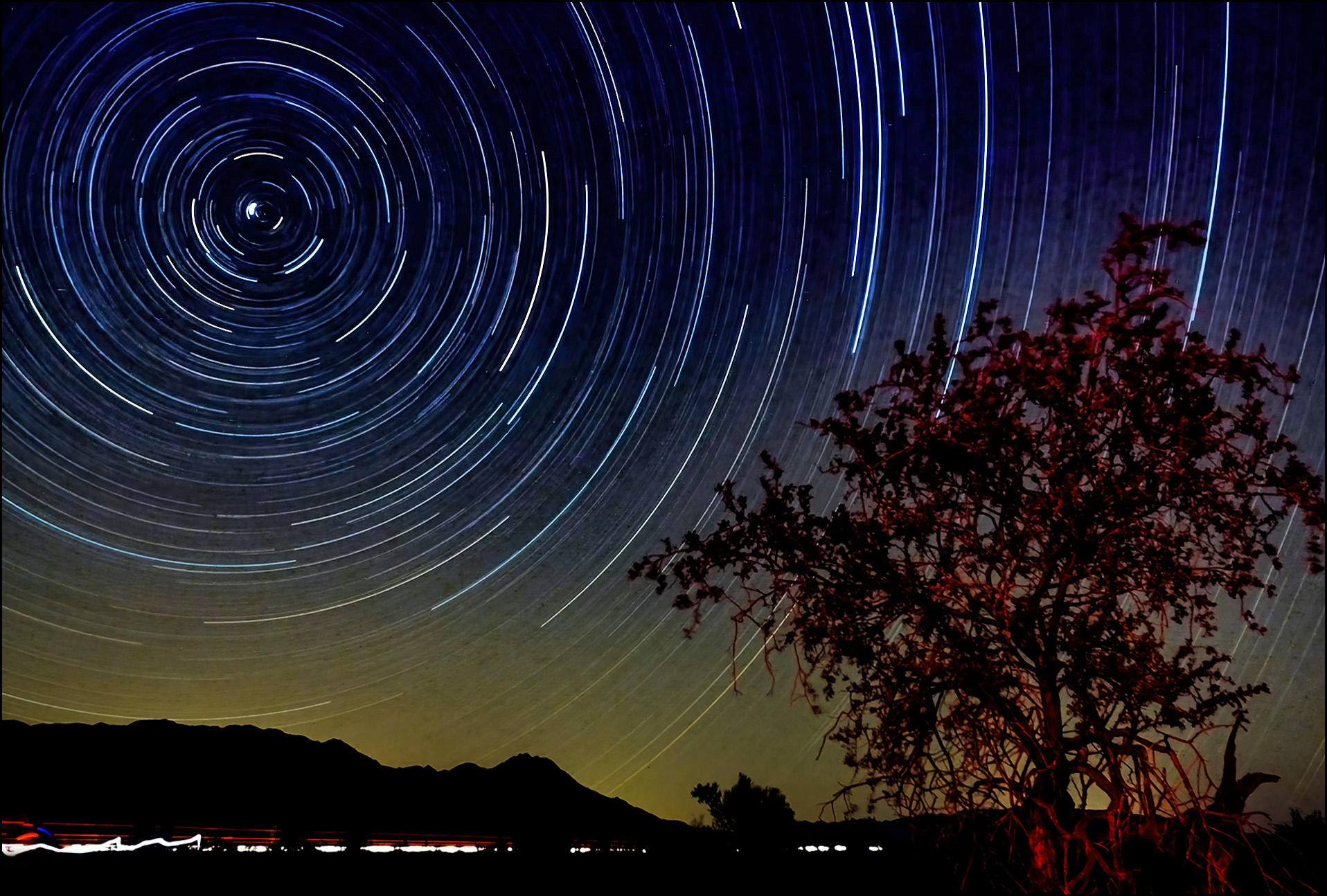Yet more astronomy today!
I'm a believer in multitasking, so when I go out to the desert I bring both my telescope and my camera. While the telescope is doing its thing, the camera might as well be doing something too.
Lately I've been playing with star trails, figuring out the best settings and exposure time. Here are a few tips:
- Pick a very dark sky. A good star trail requires at least a four-hour exposure, and that means the gaps between stars need to be really dark or else they'll wash out the trails.
- I've never had much use for my camera's long-exposure noise reduction feature because it doesn't really seem to do much. But it's the best solution for keeping noise down on a super-long exposure.
- Unfortunately, it requires as much time for the camera to calculate and remove the noise as it takes for the main exposure itself. So a four-hour exposure becomes eight hours, and no camera battery will last that long. The solution for me is a little battery pack that I plug into the camera's power socket. Between the camera battery and the battery pack I can keep the camera going for ten or twelve hours.
The picture below turned out pretty well. The tree has a reddish cast, probably because my car's tail lights were on for part of the time. The road at the bottom is Highway 177, which forms the eastern boundary of Joshua Tree National Park. It's pretty deserted late at night, which becomes obvious when you realize that the headlight streaks in the photo are all I got during a four-hour exposure.


Stop the ride, I'm gonna hurl!
Exactly my first thought!!
Beautiful....but, heck, I saw this Challenge finishing...I admire your work unreservedly...but here is some from others.
https://www.dpreview.com/challenges/Challenge.aspx?ID=15839&View=Results&Rows=4
Very Best Wishes, T
PS!!!!!!!!!!!!!!!!!!!!!!!!!!!!!!!!!!!! So great that you gave us an Edit Function...Thank you, thank you, thank you!
I see you captured a UFO near Polaris.
Great job Kevin. Love the photo.
I've never succeeded with the super-long-exposure method. Something always goes wrong. My favorite technique these days is to just shoot a bleep-ton of shorter ones over time (say, 30 seconds, which many cameras can do without an intervalometer) and then stack 'em. I use Photoshop's "maximum" stacking mode, I'm sure there are other ways to do it. Biggest danger with that technique is if the sequence is interrupted, you get unsightly holes in the trails.
Of course, you don't get any noise reduction benefits out of stacking the exposures that way, either.